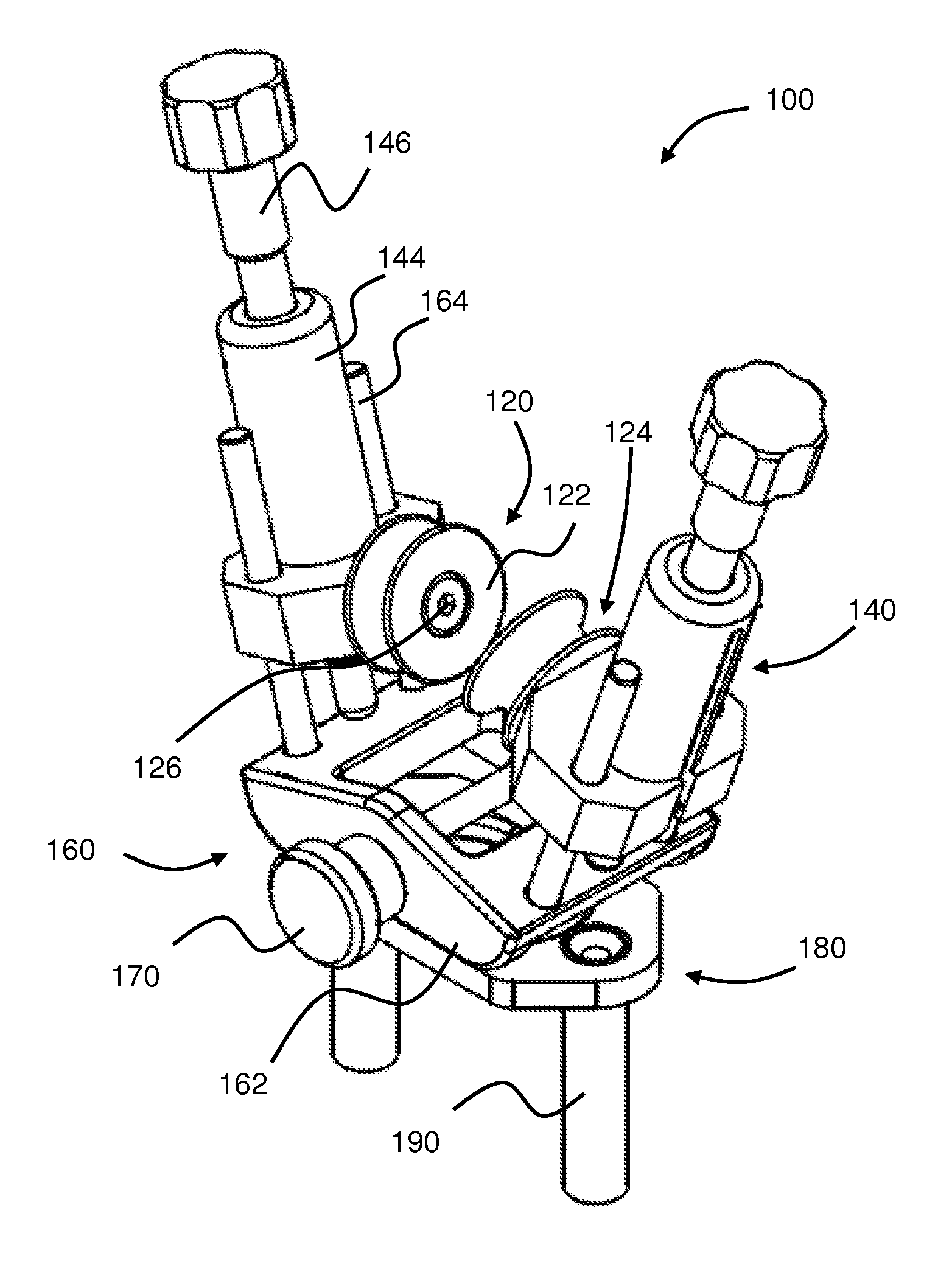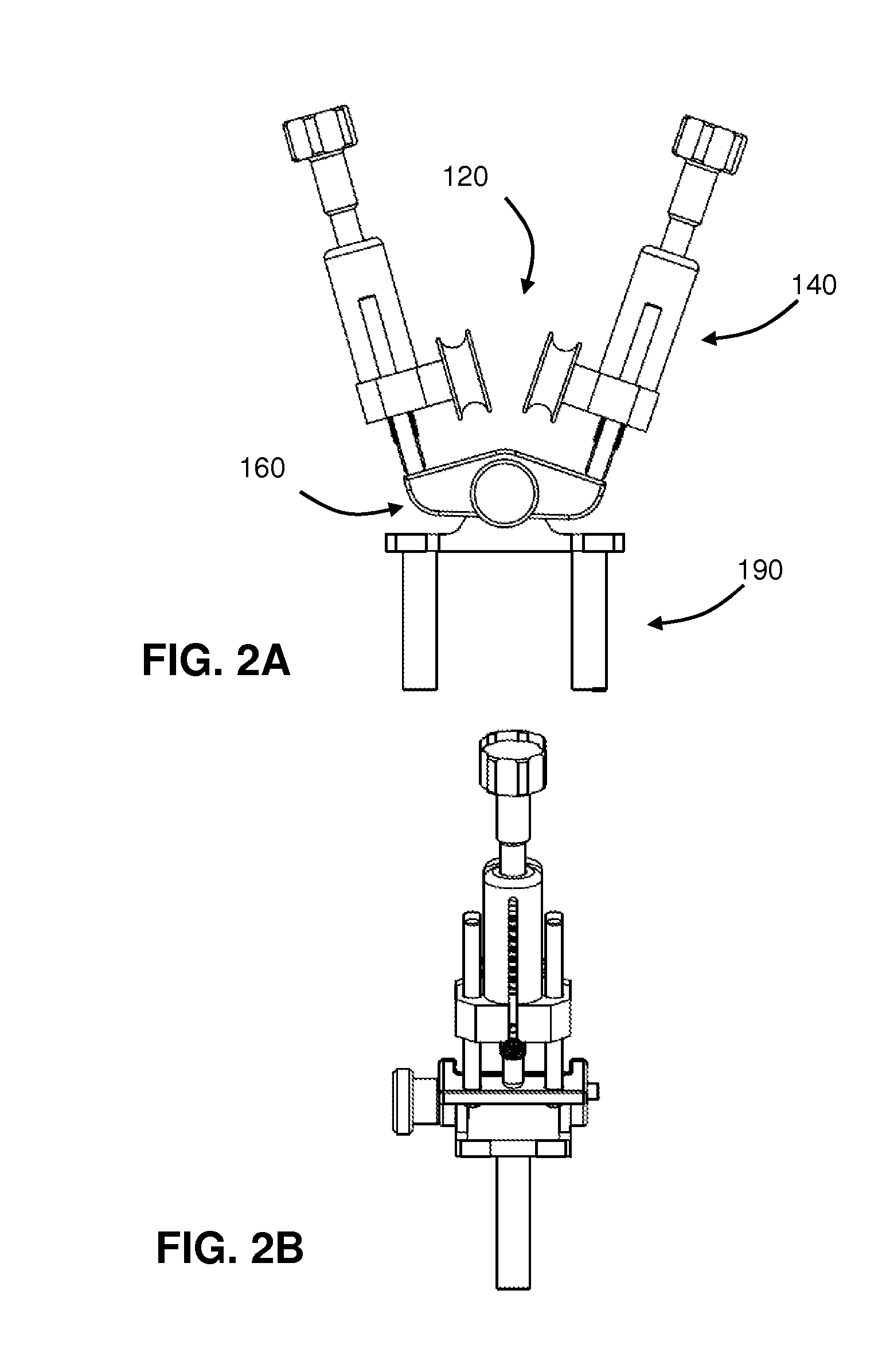Surgical tensioning assembly and methods of use
a tensioning assembly and joint technology, applied in the field of joint repair surgery, can solve the problems of uneven load being borne by each individual graft, significant loss of total graft strength and stiffness, and composite graft failure to meet the load
- Summary
- Abstract
- Description
- Claims
- Application Information
AI Technical Summary
Benefits of technology
Problems solved by technology
Method used
Image
Examples
Embodiment Construction
[0035]The present invention is directed to an apparatus and methods for independently tensioning a plurality of tissue grafts during surgical procedures, such as in procedures to replace the anterior cruciate ligament (ACL) or the posterior cruciate ligament (PCL). In order for the tissue graft to provide adequate joint stability and provide a predetermined amount of strength, but due to the tendency of many soft tissue grafts (e.g., ACL replacement) and / or sutures attached thereto to relax after the graft has been implanted, it is often necessary or desirable to pre-stress (or pre-tension) the graft prior to permanently anchoring them to the bone. The proper pre-tensioning of the tissue graft can provide a predetermined amount of joint stability and strength and can help to ensure the success of the surgical procedure.
[0036]Where multiple strands of tissue are used as the ligament graft, or multiple arms of a single graft are used, it is often difficult using prior-art devices and ...
PUM
 Login to View More
Login to View More Abstract
Description
Claims
Application Information
 Login to View More
Login to View More - R&D
- Intellectual Property
- Life Sciences
- Materials
- Tech Scout
- Unparalleled Data Quality
- Higher Quality Content
- 60% Fewer Hallucinations
Browse by: Latest US Patents, China's latest patents, Technical Efficacy Thesaurus, Application Domain, Technology Topic, Popular Technical Reports.
© 2025 PatSnap. All rights reserved.Legal|Privacy policy|Modern Slavery Act Transparency Statement|Sitemap|About US| Contact US: help@patsnap.com



